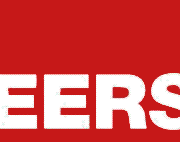The Great B-School Dilemma (Published in: Careers 360)
The Great B-School Dilemma
In the coming 4-5 months over 500,000 students will aspire for that dream MBA career through CAT/MAT/XAT/NMAT and other State tests. And less than 5 percent will make the cut of the Top 50 B-Schools. What should the others do?
Most join one of the remaining 3000 B-Schools in the country. But is it really worth it? The findings of a recent survey by Elements Academia, with 4000+ students across 200 Tier III/IV MBA colleges in 20 cities – to understand the state of management education in such colleges only reconfirmed what we all know:
Beyond the handful of top B-Schools, quality dips significantly across all key parameters:
1) Teaching quality is extremely poor. Most faculty members are themselves without any serious corporate exposure and are paid poorly.
2) Corporate interaction in terms of industry visits, internships, guest lectures and corporate input in curriculum is extremely poor.
3) Final placements – both in percentage and quality – leave much to be desired. Most Tier II schools are in the 30-40% campus placement range and that too mostly in Rs. 12-18,000 per month salary range.
So while the candidates still get a formal MBA degree, they wonder whether it is worth even the paper it is written on!
So how should the aspirants select the “right B-School”, if they don’t get a call from the top 30? My suggestion will be to look at five parameters:
1) Profile of promoters: Is the college run by politicians, real estate sharks and liquor barons, or run by professionals – from top B-Schools or corporate houses?
2)Profile of full-time faculty: Many colleges advertise IIM alumni and foreign faculty in their brochure but are they actually teaching full-time credit courses?
3) Profile of placements: The average salary in the last batch, and the placement rate in campus. Ask for these in writing, so one can sue them later on for misrepresentation.
4) Student satisfaction: Personally meet and talk to a few students when no faculty member is present. Reach out to them in their hostel or pagalguy.com and other websites. Are they satisfied? If they are not, why will you be?
5)Infrastructure: Does it give the ‘feel’ of a good B-School? Is there a residential hostel facility – all top MBA programmes across the world are fully residential, since most learning happens outside the classroom.
And beware of hollow advertisements. Personally visit the college and the hostel, interact with old students and full-time faculty, and then decide.
But the grahak jago does not end with just the B-School selection. Once inside, we need to do multiple things beyond academics to become employable. AICTE found that less than 25% of our MBAs are employable! In any good B-School, students generally spend only 40% time on academics. Another 40% in spent on co-curricular and extra-curricular activities that improve grooming, confidence, communication skills, managerial skills, exposure and help build our CV (the last 20% time is spent on fun and networking.. your last hostel experience!)
So lead functional clubs, read management books/journals like HBR, enroll in remedial communication classes, develop expertise in few chosen sectors, take part in presentations in other B-Schools, network actively, do live projects to get real-life experience, even start new ventures and become an entrepreneur in the campus itself… But remember that the real learning is outside the class!
This article was published in CAREERS 360, December 2011
The author, Nishant Saxena is CEO of Elements Akademia, started by a group of 15 IIM Alumni. He is also a Guest Faculty at IIM Lucknow and can be reached at n.saxena@elementsakademia.com




 For HT Horizon
For HT Horizon

 Are Employability Skills Coachable?
Are Employability Skills Coachable?



 This information will never be shared with third party
This information will never be shared with third party